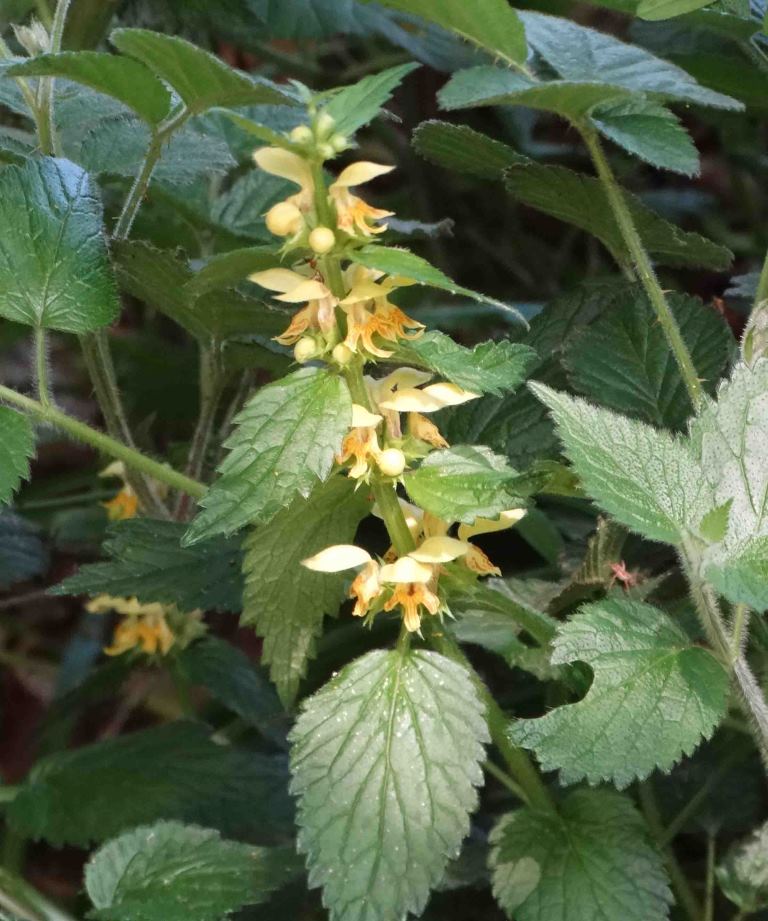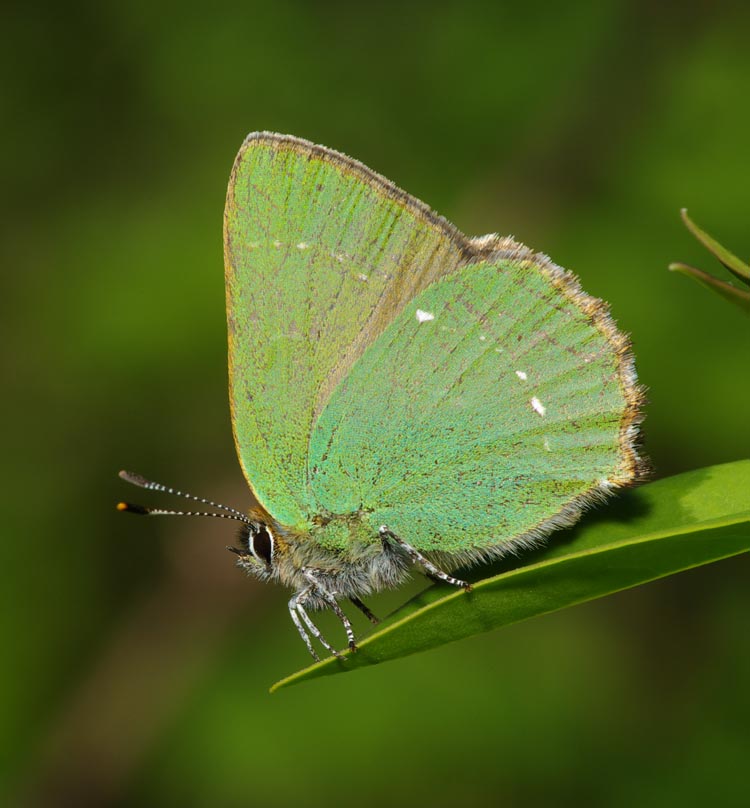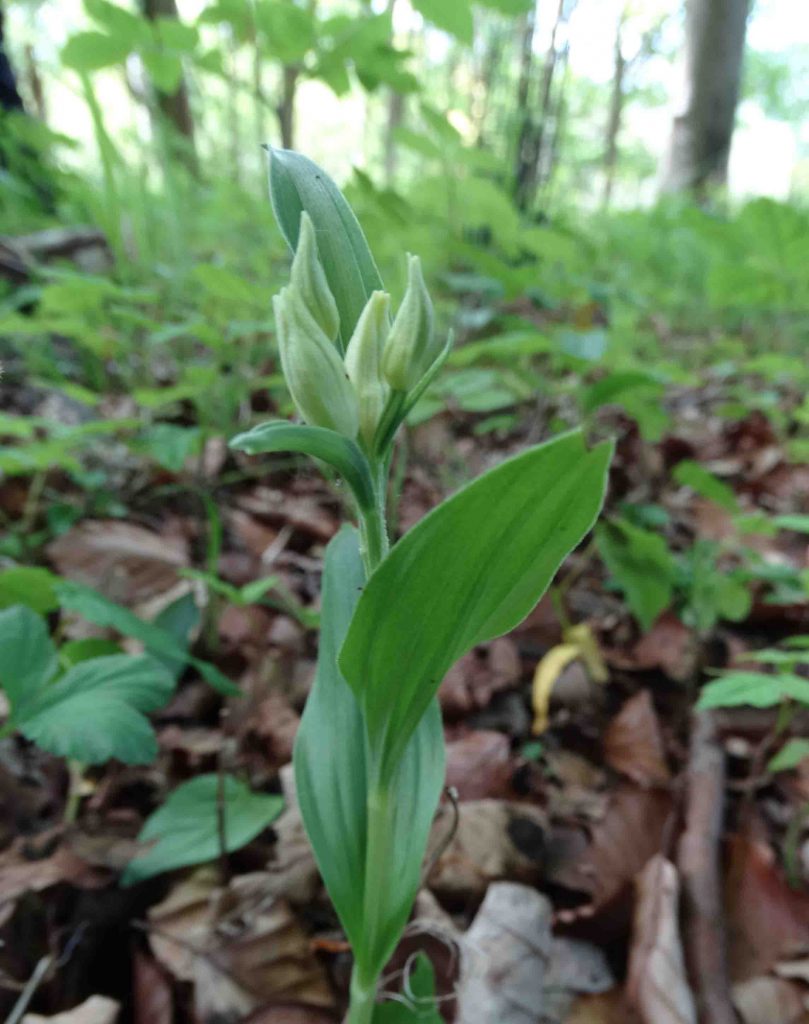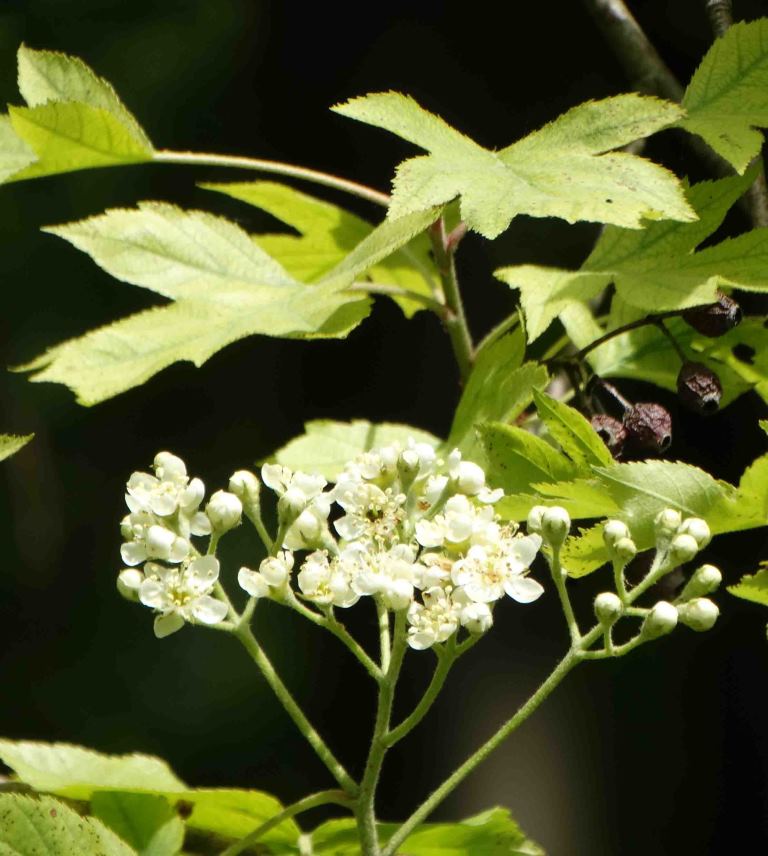Sally Rankin organised a walk on the hot and sunny morning of Wednesday 15 May, starting from the Maltsters Arms at Rotherfield Greys. Also joining the group were Andrew and Wendy Hawkins, who own Flowercroft Wood, the destination for the walk. Andrew kindly gave a fascinating commentary on the history, geology and management of the wood, and pointed out some of the special plants and trees. The walk started out along the footpath which leads past the church. Whitethroat and Yellowhammer were singing from the young trees planted next to the first field and a Small Heath butterfly was seen amongst the Dandelions in the second grassy field. The route followed the Chiltern Way briefly, before turning down Dog Lane. A large Red-tailed Bumblebee queen was seen investigating a hole in the bank beside the track and Southern Wood-rush and a large clump of Goldilocks Buttercup were noted. The next path ran along the bottom of the wood called The Paddock. Andrew commented that old maps show the wood as open farmland, and this was reinforced by the relatively impoverished flora, compared with the rich assemblage of flowers in the ancient woodland stretches. A bank marked the parish boundary and also the edge of Flowercroft Wood. Flowers here included Bluebells, Yellow Archangel, Greater Stitchwort, Bugle, Ground-ivy, Woodruff and Wood Anemone. A Nuthatch and a Great Spotted Woodpecker were seen. Andrew explained that the top of the wood was on gravel, the slopes were on chalk, and the bottom was on glacial till. The lowest section of the wood is called Bottom Wood, and this part had the best display of Bluebells. Butterflies seen here included Brimstone, Orange-tip and Speckled Wood. A Wych Elm had dropped its round, flat green seeds on the path. The next section of the walk was a wander across Kent’s Hill, a sheltered grassy meadow on the steep chalk slope, with a rich chalk flora and lots of butterflies. The latter included good numbers of Dingy Skipper, a few Grizzled Skippers, a Green Hairstreak, plus Common Blue, Holly Blue and Small Heath. Common Twayblades were found in the corner of the field where the Green Gym had recently done some scrub clearing and there was Wood Spurge there too. Salad Burnet was in flower and Carline Thistle was seen. A Red-tailed Mason Bee Osmia bicolor was spotted, carrying a long piece of grass transversely, which it uses to build its nest in an empty snail shell. The route back led past first a big clump of Green Hellebore, then a cluster of Wild Service-trees with the flowers just coming out, and finally a group of 3 White Helleborines which were protected from browsing deer with metal mesh cylinders. The walk was followed by lunch at the Maltsters Arms.
Pictures by Laurie Haseler and Martin Mitchell




